My housing estate stands on an old fruit research station that was run by Bristol University for exactly 100 years until its closure in 2003. The streets names include brambly, perry and blackcurrant.
There are a few trees remaining, including a row of pear trees from which the first Babycham was created. There are a row of hornbeams and a couple of walnut trees and a very tall Dawn Redwood. Sadly, no blackcurrants are left from the first Ribena farm, (though I have planted some).
The smaller of the walnuts grows at what would have been the old gateway. It’s on the corner of Wild Country Lane and on a popular cycle route. I found myself behind the old metal railing, looking a little shifty, and in absolute awe of the beauty of the newly opening leaf buds.
They are very photogenic and would make lovely models for artists who enjoy drawing nature.
ID features
Walnut leaf buds are black before they open. Then folded red leaves emerge with prominent green veins. I love the early days of leaves opening. The way they resemble closed fans which gradually fan out and flatten entirely. Its easy to observe each stage by looking at different branches. I think these look like hands in a kind of cupped prayer form.
About 4-5 leaf stalks and associated leaves arise out of one leaf bud. The leaf bud scales, which have opened to release the leaf clusters, peel back in a curl which looks so elegant, I can imagine it as a piece of iron work.
Each bud opens out into 8 leaves with small hairs. Eventually the leaves will become longer than my hand. The red colour is temporary, only around in the early days, before they turn green.
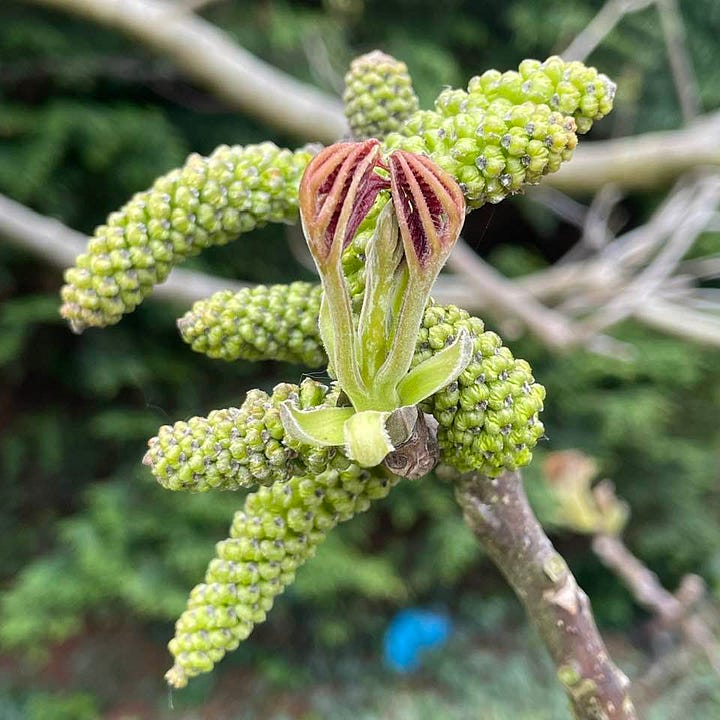
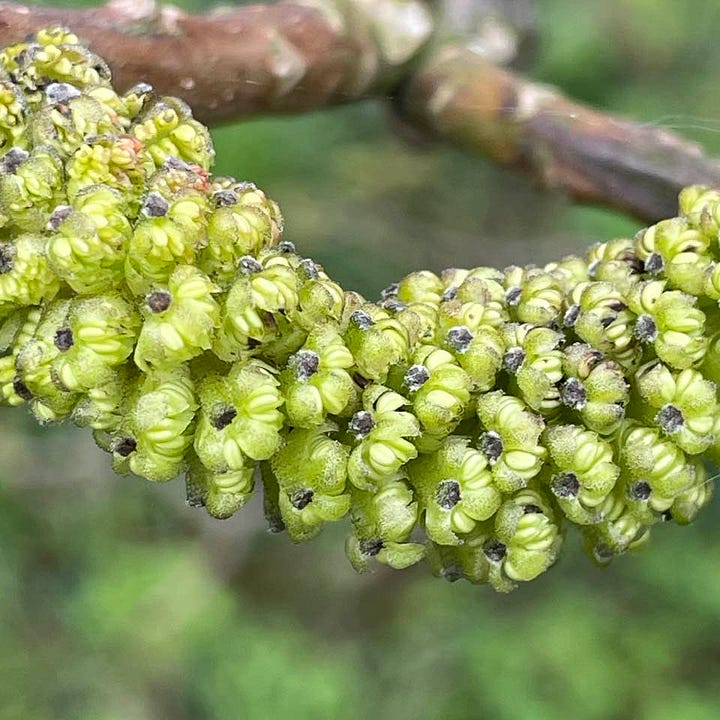
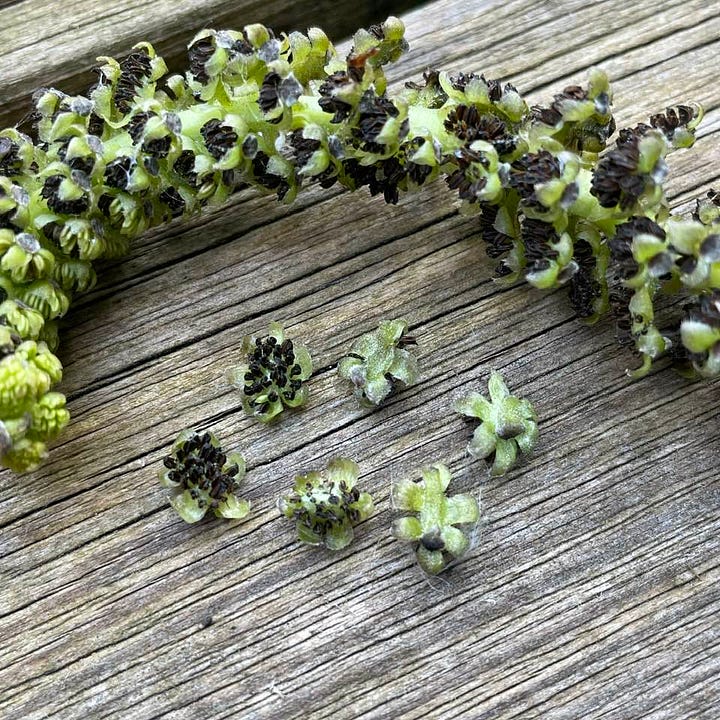
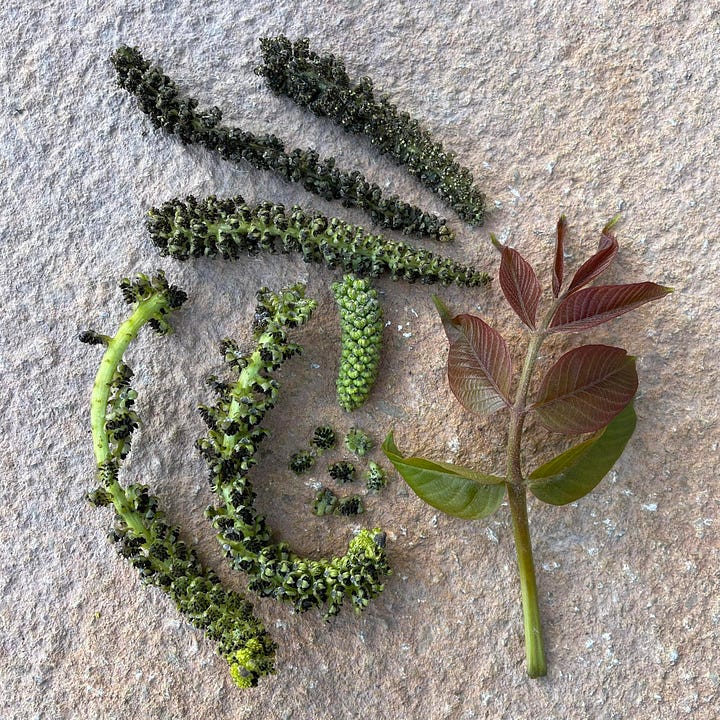
Male catkins are huge! The biggest I’ve seen on any tree, (longer than finger length). Long and broad with many stamens and pollen. They are stubby at first then elongate when mature. I picked off some of the individual flowers and noticed that they are flower shape. Light green with black anthers.
The female flowers were harder to spot. They are tiny and very discrete. I found a cluster of 3 which will turn into walnuts. I could just about make out the round shape beginning to form.
New branches are reddish and the bark is smooth and grey.
Medicinal uses
Walnut leaf, hull and bark was once a very important treatment for intestinal worms. Before the advent of synthetic anthelmintics, (agents that kill parasitic worms), there was a huge industry processing plants to keep human gut worms at bay.
Both walnut and wormwood were big players and are still combined today for a natural treatment option.
Incidentally, there is huge resistance to the synthetic drugs occurring due to vast overuse in the farming industry. It may be that we may see a return to our plant allies for support in this issue.
The main active chemical is juglone, and is active against parasitic worm infestations, bacterial overgrowths, and fungal infections.
It is also a bitter astringent which further supports digestive health.
The flavones and vitamin C contribute to its high antioxidant action.
It is also antiseptic and anti-inflammatory to aid in skin issues like eczema when used topically.
How to make a cuppa
I used too many leaves and made a cup that was very strong. I thought because they were so small, I’d need quite a few. Not true! I picked 4 leaf clusters and only needed one. I ended up pouring it into my flask to dilute further when I got home.
Usually, when fully mature, I use just one large leaf which is just right for my taste.
Taste
It smelled antiseptic and felt like pepper in the back of my throat. Pungent. It is an aromatic leaf which has citrus and floral notes. Usually, it is one of my favourites. A little bitter and astringent. Slightly like green tea.
I think they are so strong because they are only just out of bud. I will wait a month or two before harvesting again.
Cautions
Juglone is toxic in large amounts, so SHORT TERM USE ONLY!
3 weeks on, then take a break.
DO NOT TAKE IN PREGNANCY!
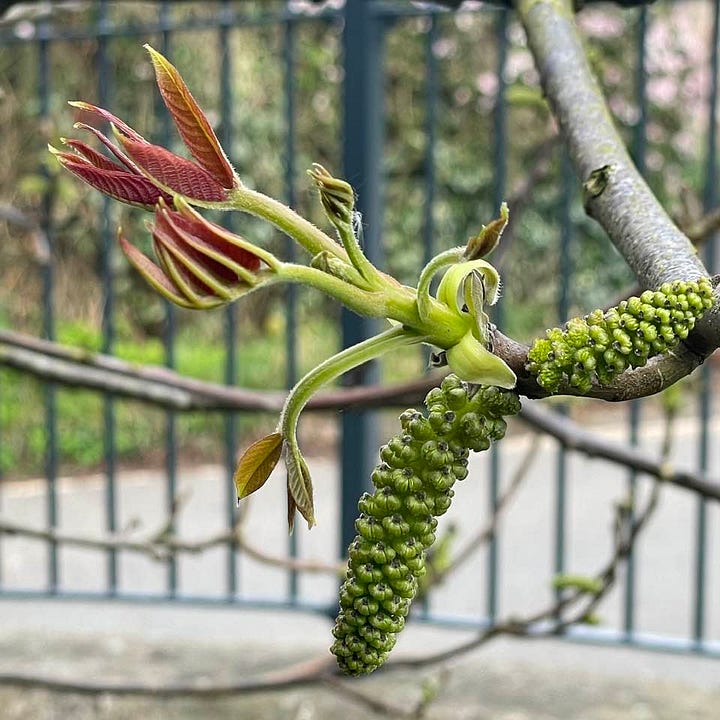
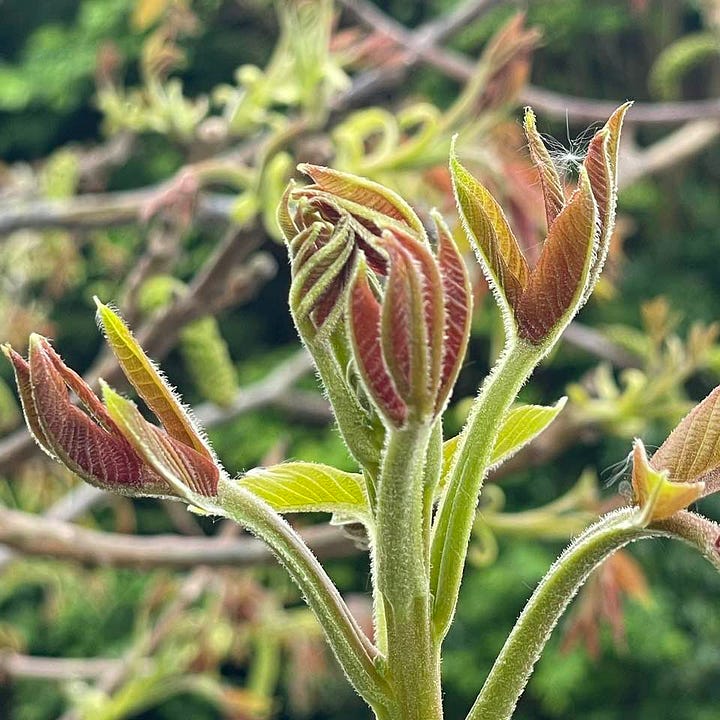
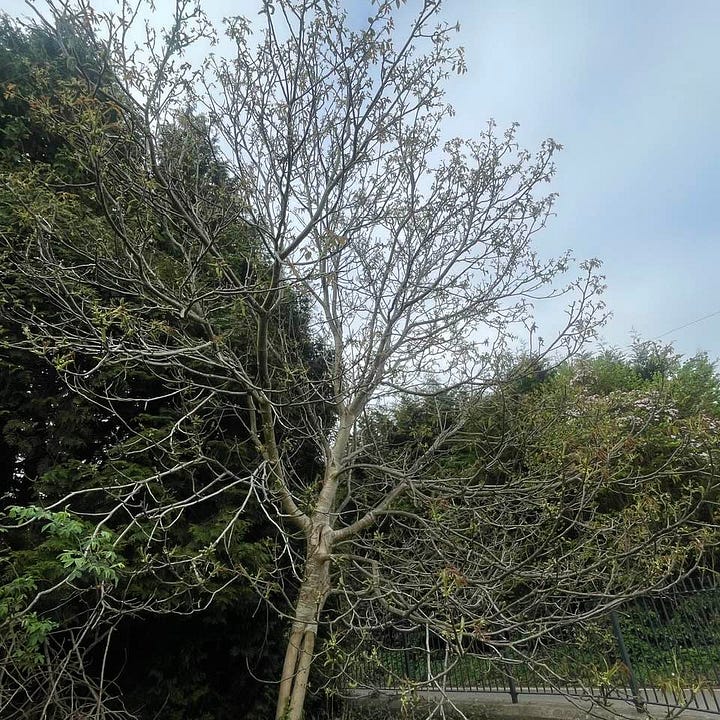
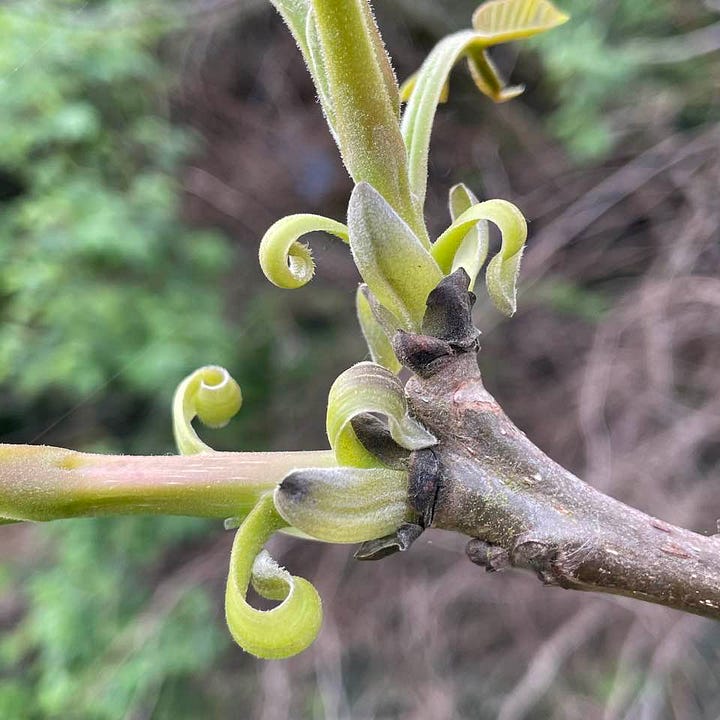
For those Local to me:
You can book me to host a herb walk either one-to-one, with a friend or as a group, (up to 20 participants max.) £10pp for group, or £30 single/in a pair. Bring a flask of hot water for a foraged tea. Contact to arrange date and time. Locations in and around the Bristol and North Somerset area.
sarah-janecobley@healthneedsthyme.co.uk
Herbal Medicine Consultations
I am a qualified medical herbalist, trained in much the same way as a GP. However, my medicines are from nature's medicine chest. They nourish and strengthen so that your body can heal itself. I offer consultations via video call and send tonics out in the post. Email me to book an appointment: sarah-janecobley@healthneedsthyme.co.uk
https://offthebeatentrackinsomerset.blogspot.com/2021/06/long-ashton-research-station.html




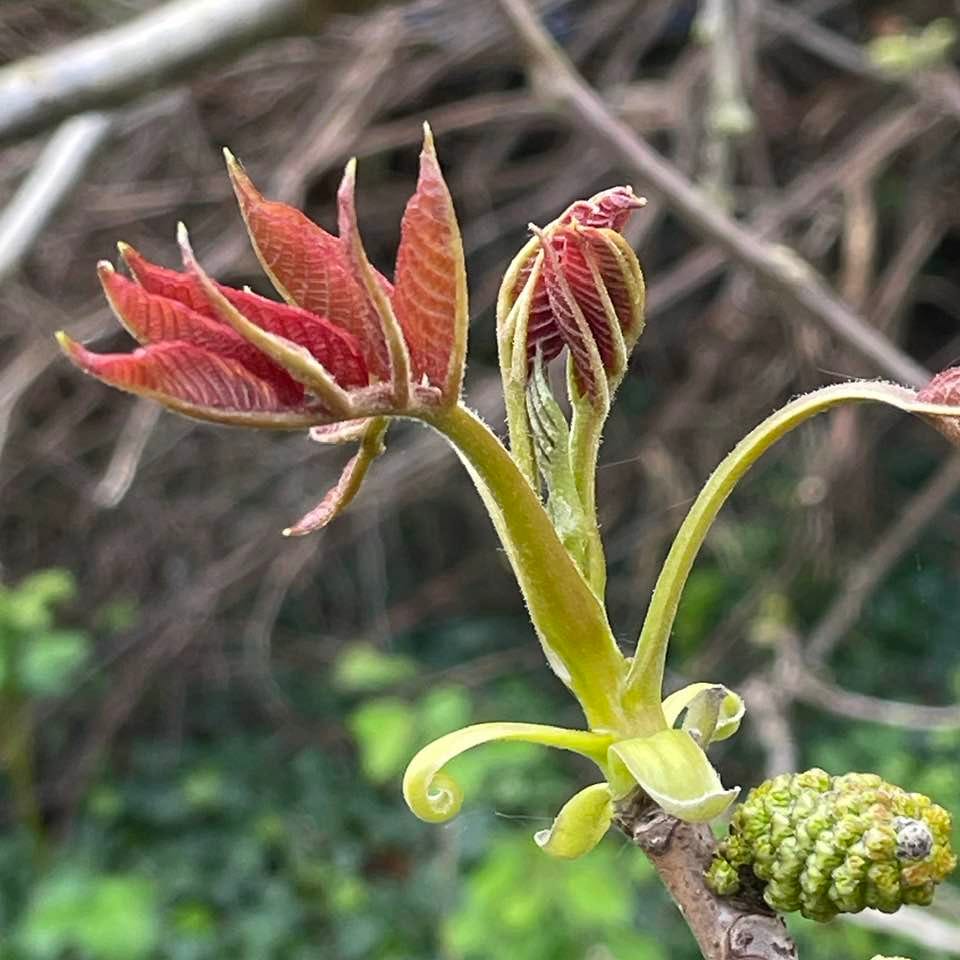
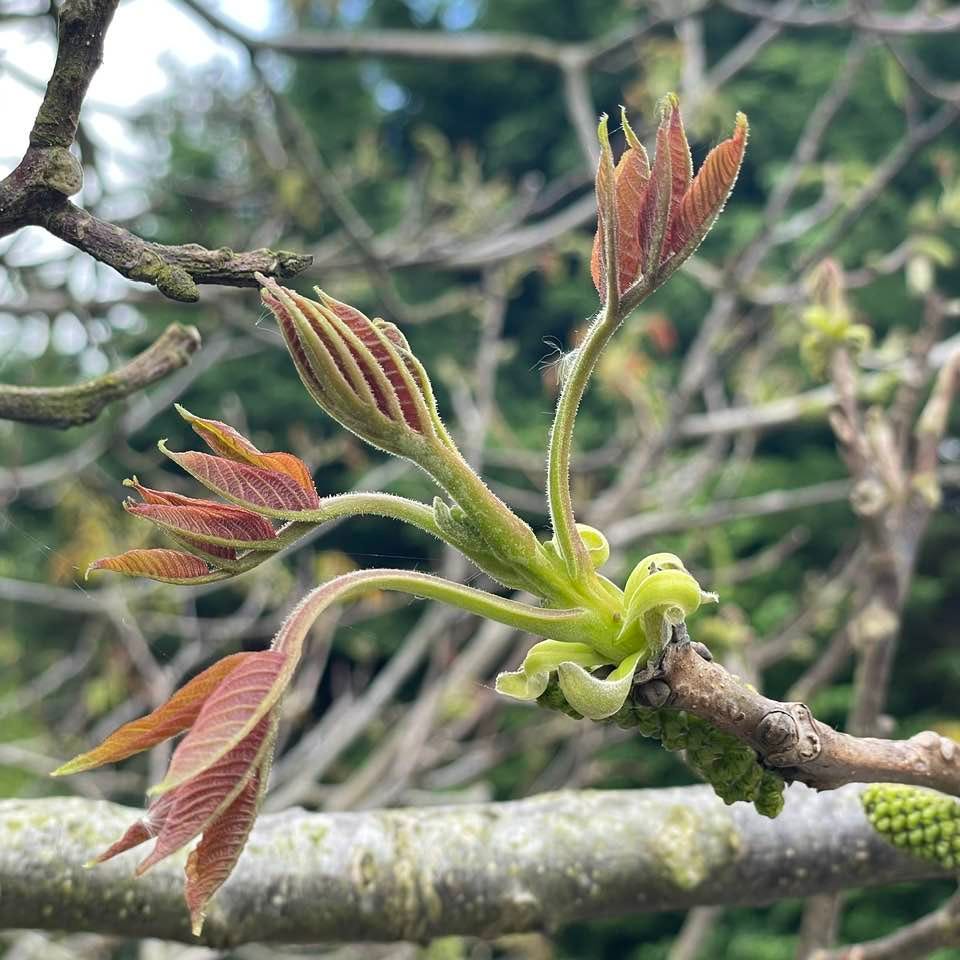

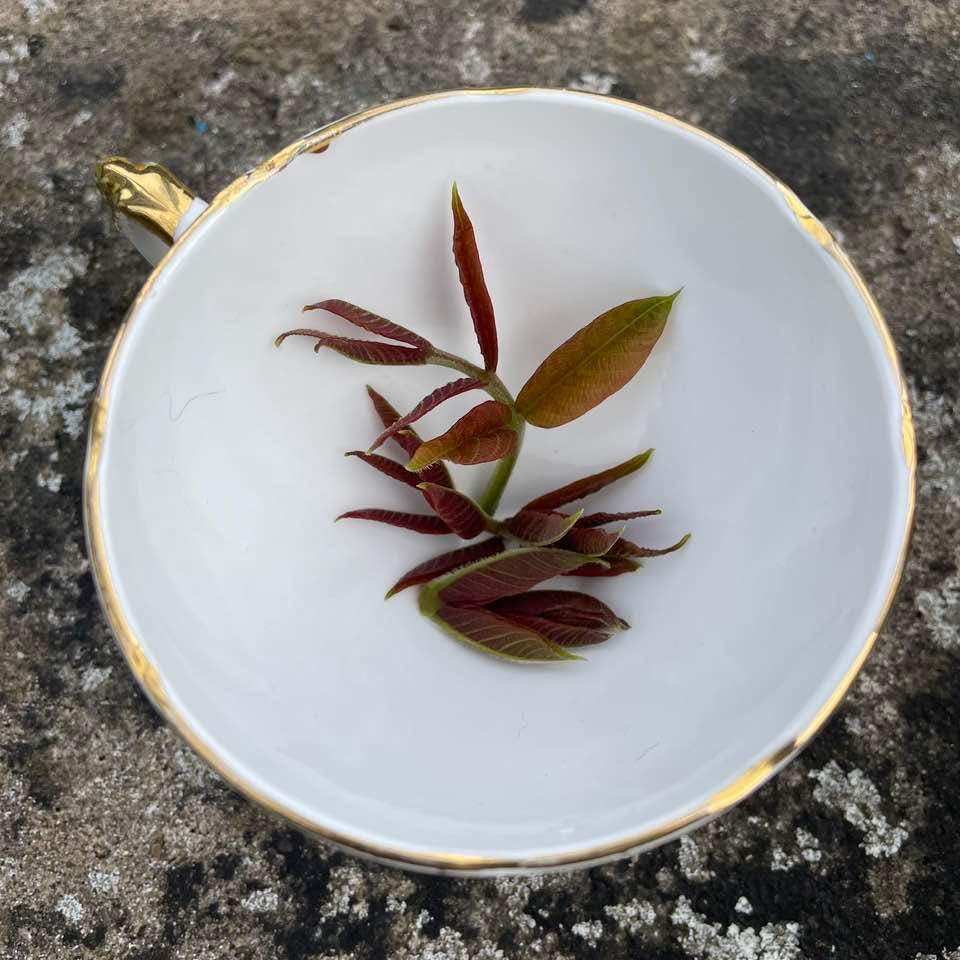
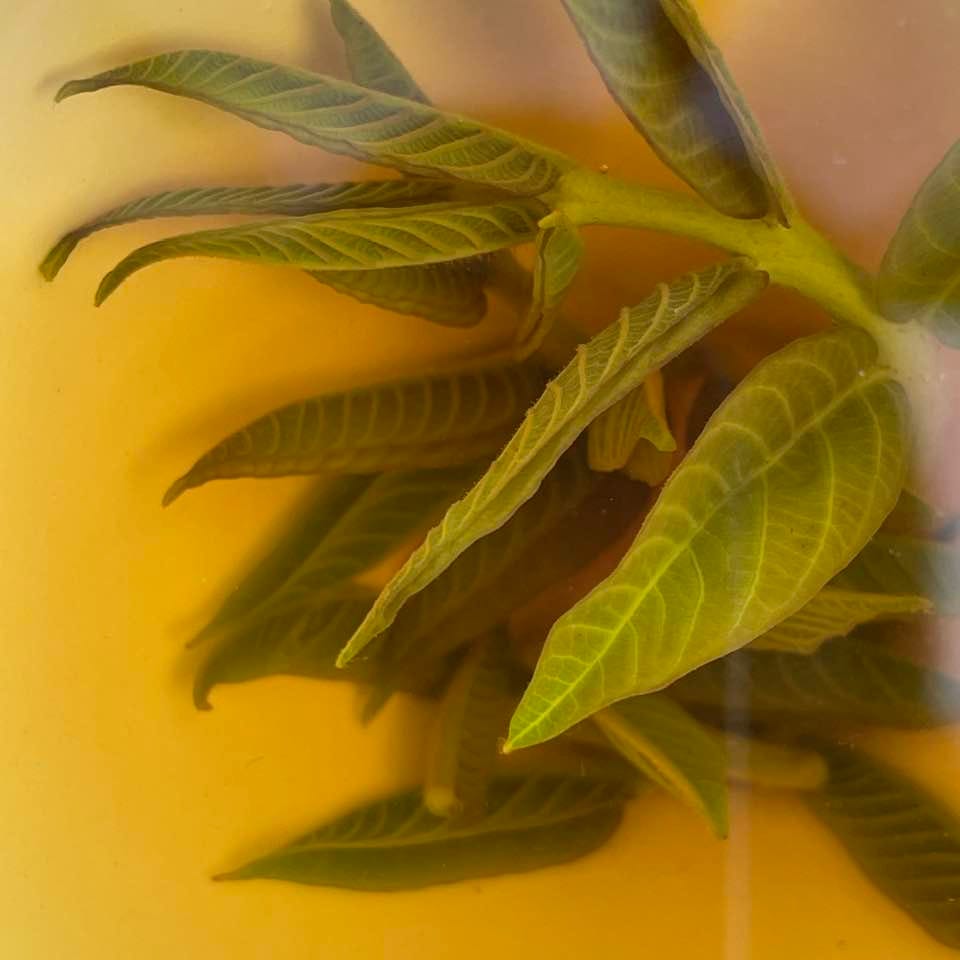
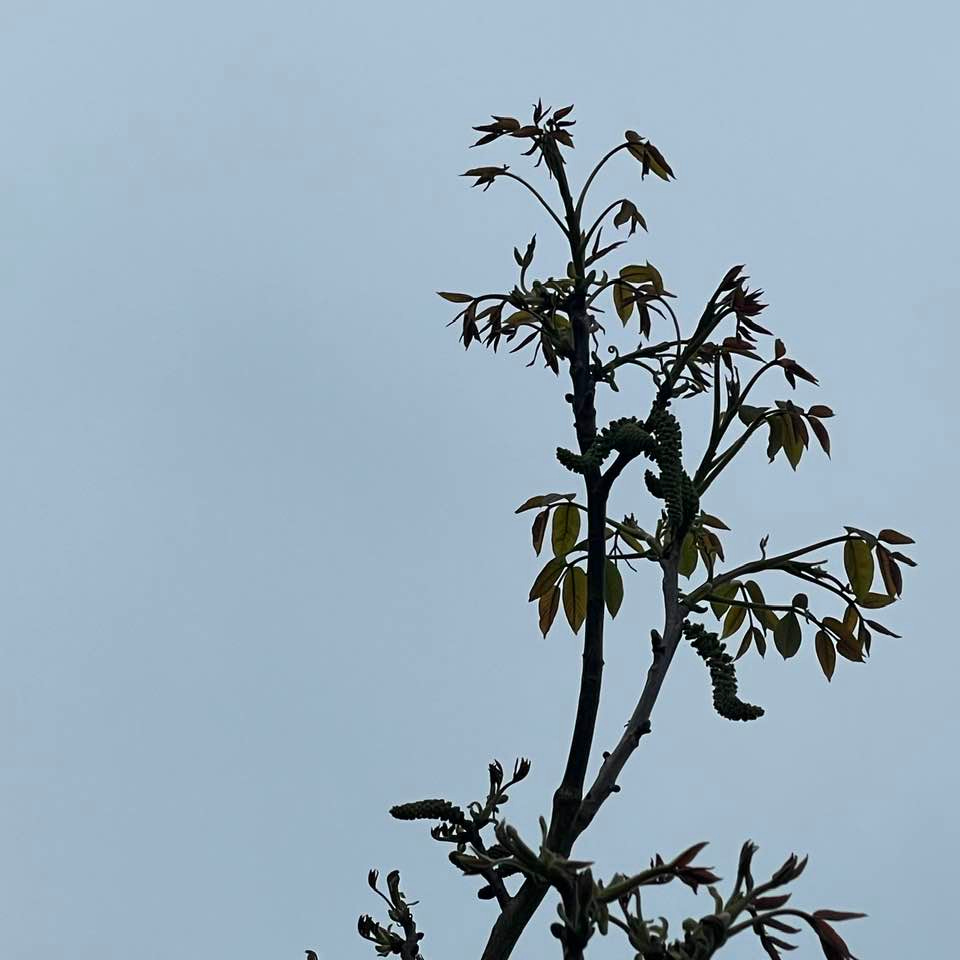


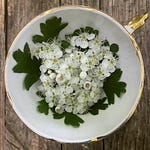






Share this post